True Price lunch at World Food DAy 2024
During World Food Day 2024, the Netherlands Food Partnership has teamed up with True Price to serve a True Price Lunch! All customers will be able to access this page to learn more about the True Prices of three types of sandwiches, along with a short explanation of the True Price methodology. Click here to go directly to the comparison of the True Prices!
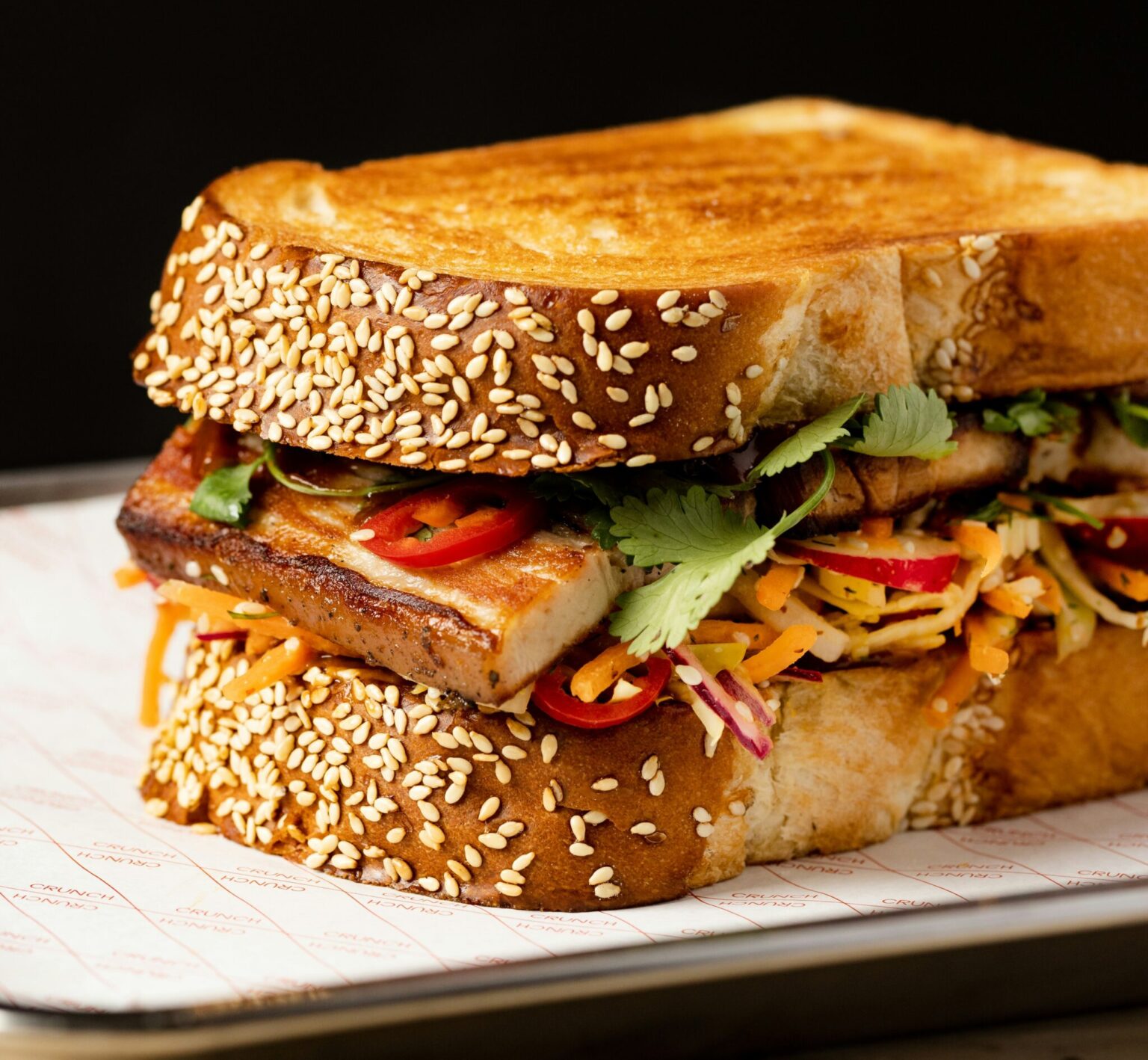
About the project
Our True Price Menu offers two delicious sandwich options: a vegan sandwich and a vegetarian sandwich. Alongside these, we’ve also calculated the true price of the meat sandwich, so you can see its impact even if it’s not on the menu.
The Global Partnership on True Price of Food, in collaboration with the Netherlands Food Partnership and True Price Foundation, has carefully calculated the social and environmental costs of the ingredients in these sandwiches. You’ll find the true prices displayed next to the sandwiches and on our dedicated webpage, empowering you to make more sustainable choices for your lunch!
On World Food Day, we hope everyone takes a moment to discover which of their daily food choices come with the highest hidden costs—and explore the social and environmental impacts behind every bite.
Sustainability at De Rijtuigenloods
The venue of NFP’s World Food Day, De Rijtuigenloods in Amersfoort, is dedicated to sustainability by partnering with Neder Groep and other specific Dutch suppliers to prioritize locally sourced and seasonal products from the Netherlands. This approach reduces the environmental impact of imports and supports local agriculture. The majority of ingredients in this true-priced lunch are sourced from within the Netherlands; however, certain exceptions apply, such as sesame seeds in the hummus, which are assumed to be imported from Nigeria. While some global challenges, like supply chain issues for agricultural machinery materials (linked to child labour risks), are beyond their control, De Rijtuigenloods remains dedicated to promoting responsible consumption and sustainable practices. It is important to note that these true price calculations are based on secondary data and not on the exact suppliers of De Rijtuigenloods.

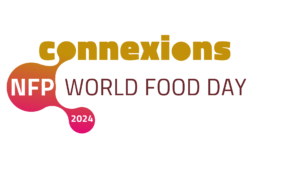
List of products
Vegan sandwich
Corn bun with hummus, grilled vegetables and nuts.
Recipe:
- 45 grams of green herb hummus
- 30 grams of red pepper
- 30 grams of eggplant
- 30 grams of zucchini
- 15 grams of onion
- 20 grams of nuts
- 67 grams of cornbun
Vegetarian sandwich
Brown multigrain bread with egg salad, cucumber and lettuce.
Recipe:
- 70 grams of bread bun
- 60 grams of egg salad
- 45 grams of cucumber
- 10 grams of lettuce
Meat sandwich
Pumpkin seed bun, with piccalilli, ham, lettuce and mayonnaise.
Recipe:
- 70 grams of bread bun
- 110 grams of ham
- 10 grams of picallily
- 16 grams of mayonnaise
- 24 grams of lettuce
Approach
How did we estimate the true price gaps?
The true price gaps are based on the True Price Assessment Method. The following timeline briefly explain our methodology:
First Step: Initial Assessment
True Price team looks at the whole supply chain of each ingredients to assess the possible social and environmental externalities.
Second step: Scope
The scope of the assessment is defined. For this project the scope was based on materiality and feasibility assessment.
Third step: Footprint measurement
The externalities within the determined scope of the project are analyzed through two phases. First, the footprint indicators are measured. What does this mean? Let's take water use as an example. Calculating this footprint indicator means finding out for each ingredients of a product how many liters of water were used in its production. For more information on the impacts taken into consideration, check out the table below!
Fourth Step: Monetization
Once the footprint for each impact is calculated, it is time to bring it all together. Keep in mind that each footprint indicator is estimated in different measurements. For instance, water use is measured in liters, while land use in hectares. Here's where monetization comes into play. Each footprint measurement is given a value in money. For instance, each liter of water use is calculated to have a specific monetary value. Click the button below to learn more about True Price monetization method!
Read MoreFifth step: The True Price
Finally, all the data is used to calculate the True Price! The True Price of a product is its market price plus its true price gap. Let's sum up how to obtain the true price gap: for each ingredient of a product the different footprints are measured and then monetized. This leaves us with a True Price that accounts for the externalities related to a product!
Data and Scope

Value chains steps
The estimates cover material parts of the value chain per ingredient
- Cultivation (on farm)

Impacts
The estimates cover 9 material social and environmental impacts
- Contribution to climate change
- Land occupation
- Use of scarce water
- Air pollution
- Water pollution
- Fossil fuel depletion
- Child labor
- Underpayment
- Underearning

Data
The results represent national average true price gaps of the products, based on:
- International footprint databases
- True Price monetisation factors
As with all research, the results have limitations. Feel free to check them here.
Results
Our analysis reveals that the true price gap for the vegan sandwich is €0.214, for the vegetarian sandwich is €0.260, and for the meat sandwich is €0.677. These figures represent the additional costs that arise from social and environmental impacts, such as greenhouse gas emissions, resource depletion, and labor conditions.
By opting for a vegan or vegetarian option, you actively contribute to reducing these negative impacts on both society and the planet. True pricing helps raise awareness of these hidden externalities, encouraging more informed decisions that promote sustainability.
Moreover, if true prices were fully incorporated, so charged to costumers, the impact on your spending power would be minimal, yet the potential for positive change through remediation would be significant. Every euro spent could be directed toward addressing the damages caused, making a meaningful difference in the long term. Together, we can make choices that support a fairer, more sustainable world.
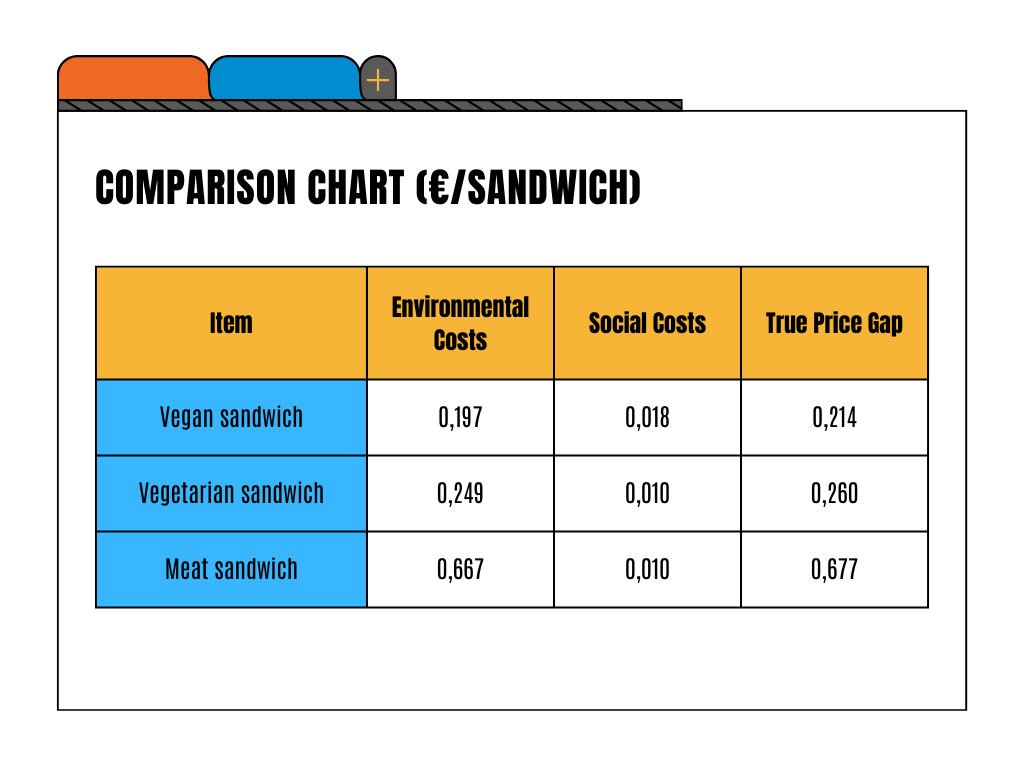
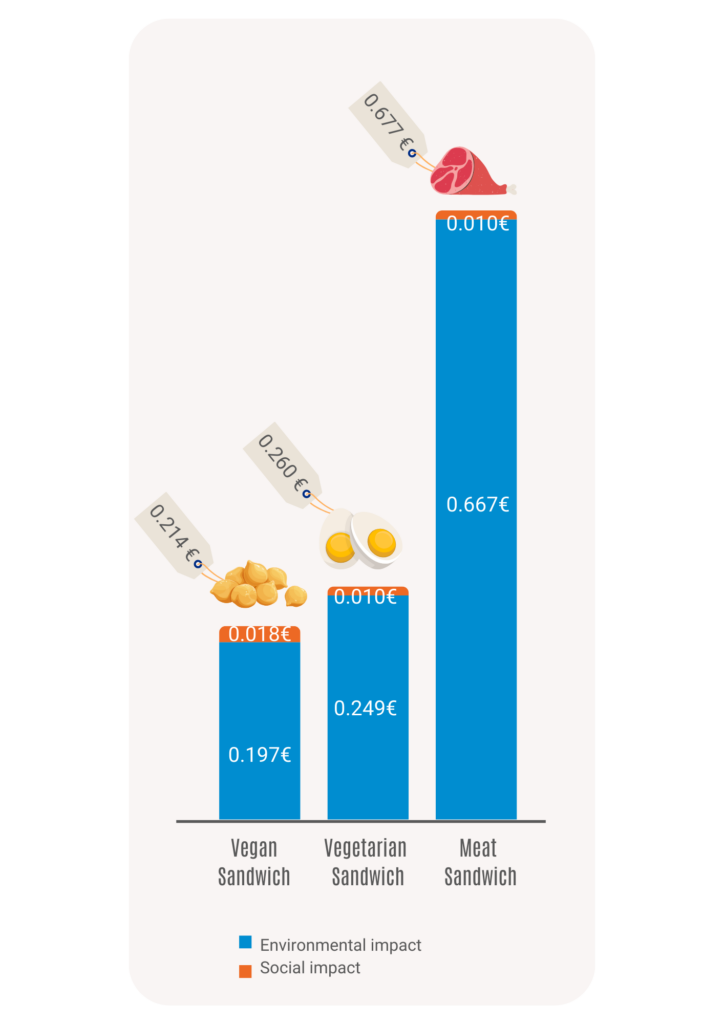
Analysis
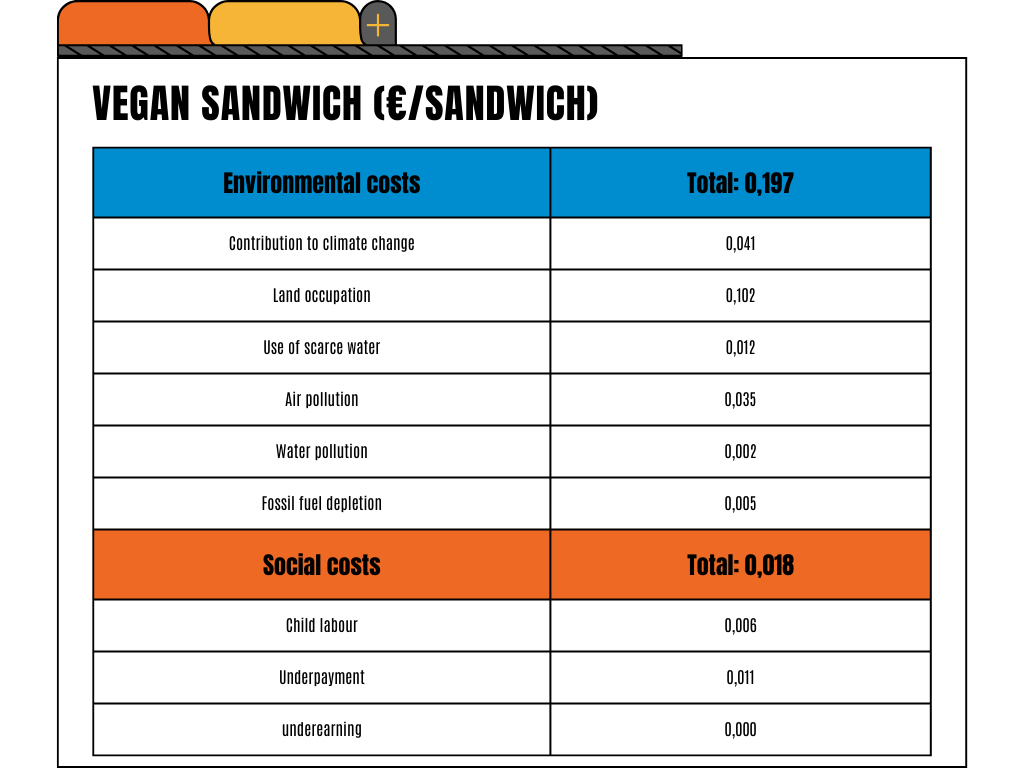
Vegan Sandwich
The ingredient with the highest contribution to the True Price gap is hummus. Approximately 45 grams of hummus is accounted for per sandwich. 68% of the impact of hummus is driven by the impact of land occupation primarily, driven by the cultivation of sesame seeds and chickpeas.
Vegetarian Sandwich
Egg salad emerges as the most significant contributor to the True Price gap, accounting for approximately 61% of the total impact. Each sandwich contains 60 grams of egg salad. The impact of egg salad is primarily driven by two factors: air pollution (37%) and land occupation (33%). These environmental costs are largely attributed to the intensive process of cultivating feed for laying hens, particularly maize and soybeans. This cultivation not only requires extensive land use but also contributes to air pollution through the application of fertilizers and pesticides. Furthermore, the laying hens themselves exacerbate air pollution by producing methane and nitrous oxide through their digestive processes and manure.
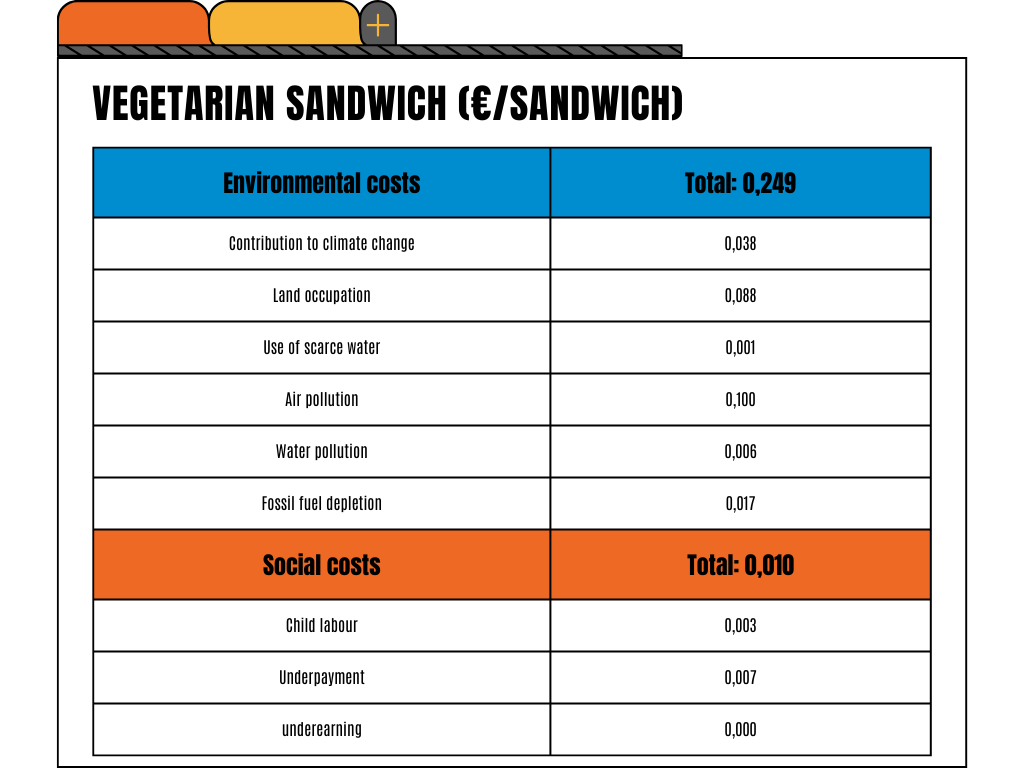
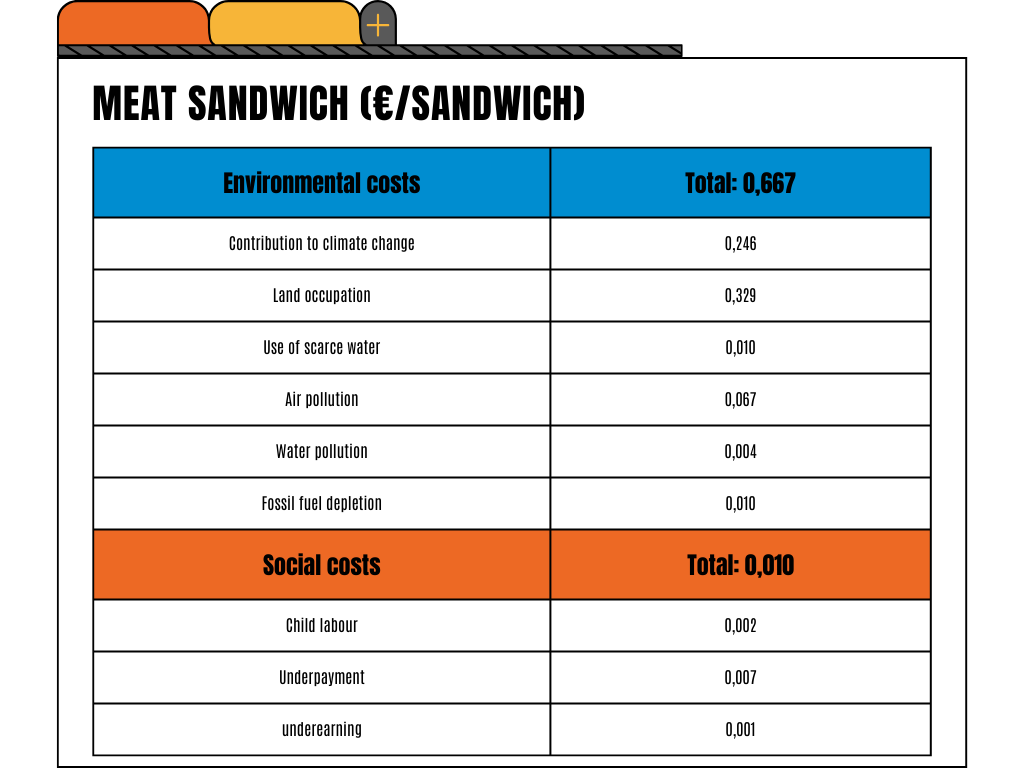
Meat Sandwich
Ham salad is the leading contributor to the True Price gap, accounting for approximately 81% of the total impact. Each sandwich contains 110 grams of ham, with 41% of its environmental cost attributed to climate change and 49% to land occupation. The significant impact of ham production arises from the extensive land required for both pig grazing and feed crop cultivation, which contributes to deforestation and habitat loss. Additionally, the entire production process generates considerable greenhouse gas emissions.
Good to know...
Review process
The project has followed a carefull and standardised review process. All results, data sources, and insights have been validated by independent impact professionals of True Price and the parties involved.
Limitations of the results
The results are based on secondary data(bases), product averages, and a number of assumptions. Moreover, a number of value chain steps and impacts are not in scope. Therefore, the results do not represent the complete true price gap of the products, nor the true price gap of the specific suppliers, and a limited margin of error should be taken into account. We advice caution and restraint in communicating and using the results to prevent confusion, miscommunication and misinterpretation
Related projects
Contact us for more information
In the media
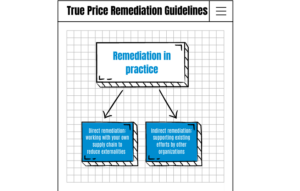
True price payments, why and how?
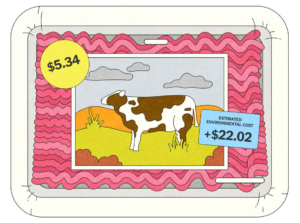
True Price Celebrates New York Times Feature Highlighting the Importance of True Pricing in Building a Sustainable Future

True Price in Action: Pauline Rosenberg’s insights from Vermaat’s Sustainability Journey
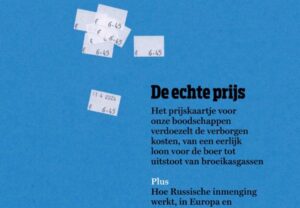
True Price featured in De Groene Amsterdammer

Announcing True Price attracts Managing Director Claire van den Broek

